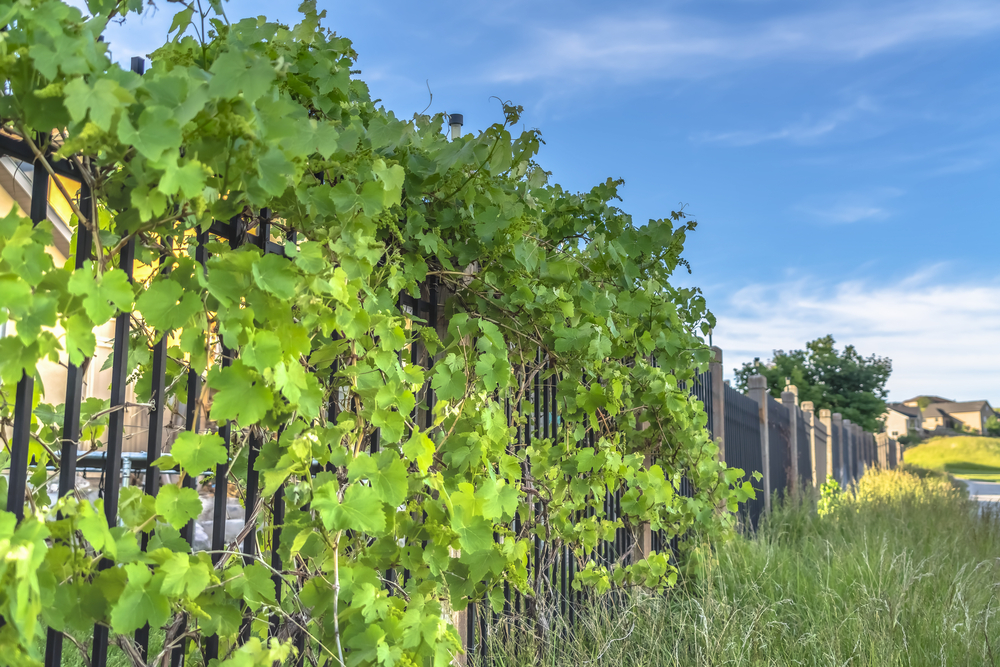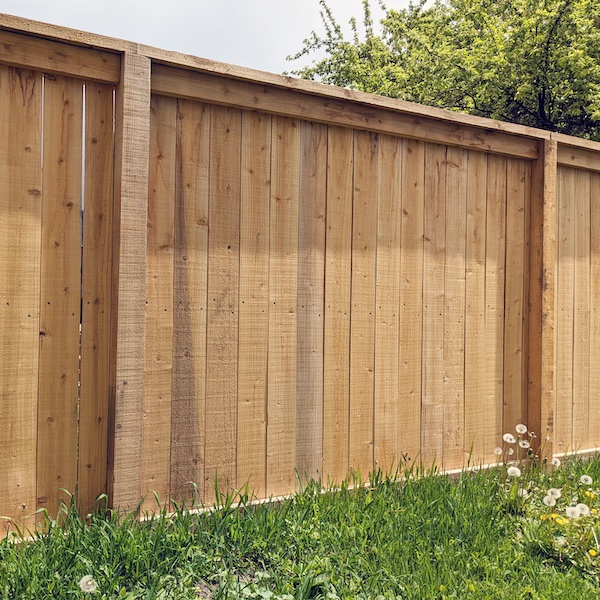All Categories
Featured
From heavy rainfall and snow to intense sunlight and wind, weather-related damages is one of the most common causes of fence deterioration. While you can not regulate the climate, there are numerous means to safeguard your fencing from the damaging impacts of weather condition and ensure it lasts for years to come.
Wooden Fencings: While wood fences are a timeless selection, they are extremely prone to wetness and pests. To make a wood fence more durable, opt for pressure-treated lumber, cedar, or redwood. These materials are much more resistant to rot and pests. Nonetheless, you'll still require to safeguard the timber from the elements with regular upkeep.
Plastic Fences: Plastic fencings are highly long lasting and require little maintenance. They are immune to fading, cracking, and bending, making them excellent for areas that experience extreme sun, rain, or winter. Vinyl also won't rot or draw in pests, offering long-lasting security without the requirement for consistent upkeep.
Metal Fences: Wrought iron and aluminum fencings are outstanding choices for their stamina and resistance to wind and wetness. However, they are susceptible to rusting in time, especially if subjected to constant rains or moisture. Choose powder-coated or galvanized metal fencings to reduce the threat of rust.
![]()
Composite Fences: Incorporating timber fibers and plastic, composite fencings are resistant to rotting, fading, and insect damages. They offer the look of timber with much less maintenance, making them an excellent alternative for locations with variable climate condition.
![]()
Wooden Fences: A high quality timber sealer or stain is necessary to secure your fencing from the aspects. Wood sealants block dampness and secure versus mold and mildew growth. They also avoid UV damages that can trigger fading and splitting. Be certain to reapply the covering every couple of years to keep your surround leading problem.
Plastic Fences: While vinyl is low-maintenance, you can still shield it additionally by using a UV protectant. These layers aid stop staining triggered by extended sunlight exposure. Furthermore, utilize vinyl-specific cleaners to maintain the surface area devoid of discolorations or dust accumulation.
Metal Fences: To secure metal fencings from rust and deterioration, think about using a rust-inhibiting primer followed by a safety paint designed for outside usage. When possible, powder coating offers a resilient and long lasting surface that can withstand extreme weather.
Wood Fencings: Tidy your wooden fencing with a pressure washing machine or a soft cloth and light detergent. Be sure to get rid of leaves, mold and mildew, and dirt that can hold dampness versus the timber. Check the fence regularly for signs of rot, splits, or insect problems. Early discovery can protect against tiny issues from becoming expensive repair work.
Vinyl Fences: Plastic fences are easy to clean with soap and water. For harder stains, you can utilize a mild bleach solution or a plastic cleaner to restore the fencing's look. Don't fail to remember to evaluate for any kind of splits that might allow water in, bring about further damages.
Steel Fences: Clean metal fences with a soft cloth to eliminate rust, dust, and dirt. If you see rust places, eliminate them instantly with a cable brush and treat the area with a rust-resistant guide or paint to avoid it from spreading out.
Wooden Fencings: When installing wood fencing posts, see to it they are established deeply into the ground, preferably below the frost line to prevent shifting throughout freezing temperature levels. Use concrete to protect the articles and prevent them from being or leaning rooted out by strong winds.
Steel Fencings: For steel fencings, make sure that the posts are firmly secured in concrete. This is especially vital in regions with frequent tornados or hefty winds. You might additionally want to mount added bracing to offer added support against wind anxiety.
Additionally, excessive moisture from nearby plants can bring about mold and mildew and rot in wooden fences, so maintain plants at a secure range to permit appropriate air flow and water drainage.
Metal fencings should be checked for rust prior to the wintertime period starts, and any kind of affected areas ought to be treated with rust-resistant products. Furthermore, applying a coat of paint or safety layer before the chilly weather condition sets in can assist secure your fence from ice and snow damage.
![]()
Conclusion. Safeguarding your fencing from weather-related damage needs a mix of proper material option, regular upkeep, and aggressive treatment. Whether you have a wood, vinyl, steel, or composite fence, the ideal safety measures can prolong its life expectancy and keep its appearance. By following these easy yet efficient steps, you can secure your fencing against the elements and keep it looking fantastic for numerous years to find.
- Select Weather-Resistant Materials. One of one of the most efficient means to shield your fencing is by picking the appropriate material for your environment. Specific products are a lot more resilient and much better fit to endure details weather condition conditions.
Wooden Fencings: While wood fences are a timeless selection, they are extremely prone to wetness and pests. To make a wood fence more durable, opt for pressure-treated lumber, cedar, or redwood. These materials are much more resistant to rot and pests. Nonetheless, you'll still require to safeguard the timber from the elements with regular upkeep.
Plastic Fences: Plastic fencings are highly long lasting and require little maintenance. They are immune to fading, cracking, and bending, making them excellent for areas that experience extreme sun, rain, or winter. Vinyl also won't rot or draw in pests, offering long-lasting security without the requirement for consistent upkeep.
Metal Fences: Wrought iron and aluminum fencings are outstanding choices for their stamina and resistance to wind and wetness. However, they are susceptible to rusting in time, especially if subjected to constant rains or moisture. Choose powder-coated or galvanized metal fencings to reduce the threat of rust.

Composite Fences: Incorporating timber fibers and plastic, composite fencings are resistant to rotting, fading, and insect damages. They offer the look of timber with much less maintenance, making them an excellent alternative for locations with variable climate condition.
- Apply Safety Coatings. Regardless of the material, using protective finishes is critical in extending the life of your fence. Coatings create a barrier that shields your fencing from dampness, UV rays, and various other ecological stressors.

Wooden Fences: A high quality timber sealer or stain is necessary to secure your fencing from the aspects. Wood sealants block dampness and secure versus mold and mildew growth. They also avoid UV damages that can trigger fading and splitting. Be certain to reapply the covering every couple of years to keep your surround leading problem.
Plastic Fences: While vinyl is low-maintenance, you can still shield it additionally by using a UV protectant. These layers aid stop staining triggered by extended sunlight exposure. Furthermore, utilize vinyl-specific cleaners to maintain the surface area devoid of discolorations or dust accumulation.
Metal Fences: To secure metal fencings from rust and deterioration, think about using a rust-inhibiting primer followed by a safety paint designed for outside usage. When possible, powder coating offers a resilient and long lasting surface that can withstand extreme weather.
- Routine Cleaning and Assessments. Appropriate cleaning and normal examinations are important to preserving the integrity of your fencing. Accumulation of particles, dust, and mold can trap wetness versus your fencing and cause long-lasting damages.
Wood Fencings: Tidy your wooden fencing with a pressure washing machine or a soft cloth and light detergent. Be sure to get rid of leaves, mold and mildew, and dirt that can hold dampness versus the timber. Check the fence regularly for signs of rot, splits, or insect problems. Early discovery can protect against tiny issues from becoming expensive repair work.
Vinyl Fences: Plastic fences are easy to clean with soap and water. For harder stains, you can utilize a mild bleach solution or a plastic cleaner to restore the fencing's look. Don't fail to remember to evaluate for any kind of splits that might allow water in, bring about further damages.
Steel Fences: Clean metal fences with a soft cloth to eliminate rust, dust, and dirt. If you see rust places, eliminate them instantly with a cable brush and treat the area with a rust-resistant guide or paint to avoid it from spreading out.
- Enhance Your Fencing with Appropriate Installation. Appropriate installation is one of one of the most reliable ways to avoid weather-related damage. A fence that is poorly mounted is much more most likely to collapse or experience damage during storms.
Wooden Fencings: When installing wood fencing posts, see to it they are established deeply into the ground, preferably below the frost line to prevent shifting throughout freezing temperature levels. Use concrete to protect the articles and prevent them from being or leaning rooted out by strong winds.
Steel Fencings: For steel fencings, make sure that the posts are firmly secured in concrete. This is especially vital in regions with frequent tornados or hefty winds. You might additionally want to mount added bracing to offer added support against wind anxiety.
- Trim Trees and Bushes Near Your Fence. Overgrown trees and hedges can cause significant damage to your fencing, specifically throughout hefty tornados or high winds. Tree branches can scratch versus the fence, causing scratches, and their roots can undercut the posts. Keep plant life cut and make sure that tree branches are not leaning on or near the fencing.
Additionally, excessive moisture from nearby plants can bring about mold and mildew and rot in wooden fences, so maintain plants at a secure range to permit appropriate air flow and water drainage.
- Winterize Your Fence. If you stay in a location with extreme winter seasons, take additional safety measures to shield your fence from freezing temperatures, snow, and ice. For wood fences, see to it the base of the blog posts rises above ground level to stay clear of water build-up, which can fracture the wood and ice up. Consider using a dampness barrier around the base of the posts to maintain them completely dry throughout the winter season.
Metal fencings should be checked for rust prior to the wintertime period starts, and any kind of affected areas ought to be treated with rust-resistant products. Furthermore, applying a coat of paint or safety layer before the chilly weather condition sets in can assist secure your fence from ice and snow damage.
- Post-Storm Repair works. Tornados can trigger prompt damages to your fence, including dropped branches, damaged messages, or dislodged panels. If your fencing has actually been severely harmed, it's a good idea to consult a specialist for repairs to ensure it stays structurally sound.

Conclusion. Safeguarding your fencing from weather-related damage needs a mix of proper material option, regular upkeep, and aggressive treatment. Whether you have a wood, vinyl, steel, or composite fence, the ideal safety measures can prolong its life expectancy and keep its appearance. By following these easy yet efficient steps, you can secure your fencing against the elements and keep it looking fantastic for numerous years to find.
Latest Posts
How Regular Vehicle Maintenance at Montclare Auto Repair Reduces Costs
Published Jun 01, 25
1 min read
Join WyHy Federal Credit Union – Top Benefits for Your Future
Published May 26, 25
1 min read
Uncover Montclare Auto Repair’s Leading Services and Why Drivers Trust Them
Published May 25, 25
1 min read